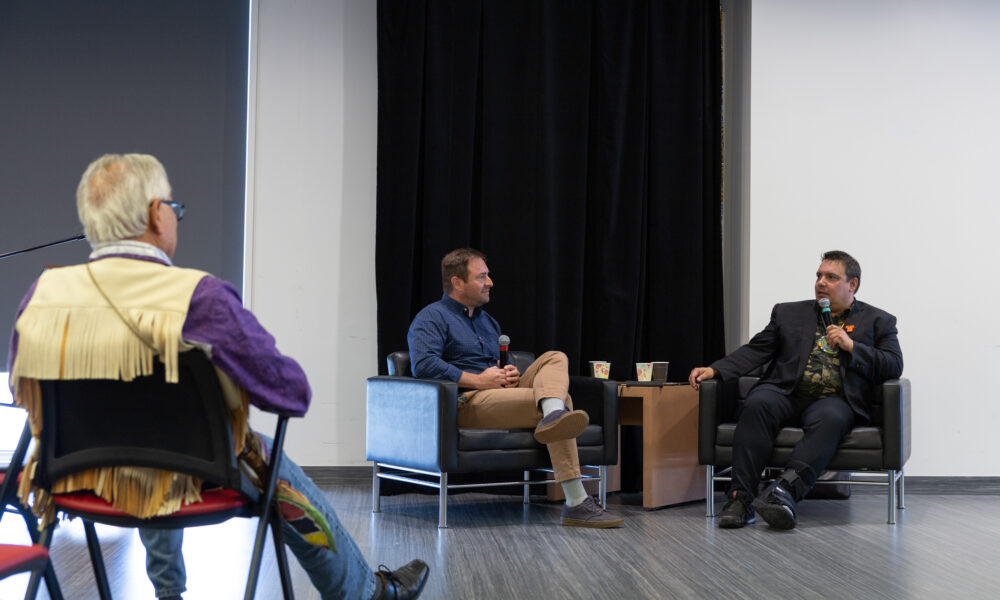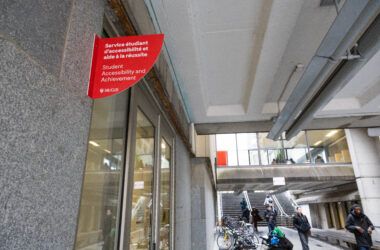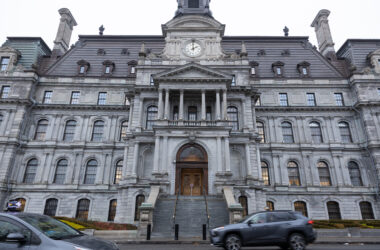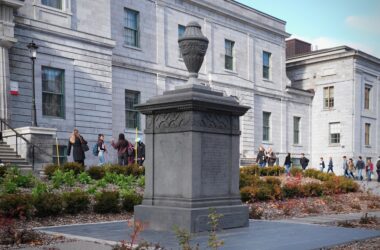McGill’s Office of Indigenous Initiatives hosted a keynote conversation titled “Reconciliation and Resistance: Where Are We Now?” on Sept. 24 in the Donald E. Armstrong Building. The talk was led by Dr. Niigaan Sinclair—Anishinaabe scholar at the University of Manitoba and son of Truth and Reconciliation Commission (TRC) Chairman Murray Sinclair—and moderated by Veldon Coburn, Faculty Chair of the Indigenous Relations Initiative at McGill. The keynote aimed to reflect on Canada’s progress since the release of the TRC’s 94 Calls to Action in 2015.
The TRC operated from 2008-2015 as part of the Indian Residential Schools Settlement Agreement, and worked to document the history and impacts of Canada’s residential school system. Over six years, the commission gathered testimony from over 6,500 witnesses, including survivors, about the residential school system. In 2015, the TRC released their final reports, including 94 Calls to Action directed at governments, institutions, and Canadian society to address the enduring effects of residential schools and make progress towards reconciliation.
The keynote began with a statement from Elder Ka’nahsóhon Kevin Deer, who called on the audience to remember the importance of gratitude and reciprocity in their relationships with the natural world.
“Because all of this love from our Mother comes without fail, and all she asks in return is that we acknowledge and give thanks,” Deer said. “This past Sunday, in our longhouse, we had sacred ceremonies, song, dance, speeches and rituals, because we’re so happy that we’re coming down to the end of the growing season. And our Mother gave us all of this love.”
Coburn then introduced Sinclair, who began his talk by speaking on Winnipeg’s role in Canada’s Indigenous history, including its residential school system.
“Winnipeg is the ground zero in the center of the continent, and that means that we inherit everything,” Sinclair stated. “Good, bad, great, ugly, we inherit it all. We are the first footsteps. The residential school system [was] the first footsteps of theft of Indian lands, [was] the first footsteps of the imposition of Indian agents and the removal of children.”
He then spoke on the broad lack of knowledge among Canadian court officials on Indigenous rights in the realms of culture, health, and rental subsidies. Coburn furthered the talk by introducing the topic of racism’s far-reaching fiscal impact.
“Racism is a very expensive, bad fiscal policy,” Coburn described. “It’s very expensive to house Indigenous Peoples in jail each year, [costing] about $120,000 to $250,000 [CAD], and that stems from racism in policing, the courts, the correctional system, and education, depriving [Indigenous Peoples] of the opportunities that anyone else has.”
Sinclair illustrated these systemic inequities through a story shared with him by Manitoba Premier Wab Kinew, who has spent time visiting Indigenous men in youth offender centres. Kinew explained to Sinclair that he initially went to these centres to guide young Indigenous men away from homelessness, addiction, and crime. But what struck Kinew most, Sinclair recounted, was not just the over-policing or poverty Indigenous Peoples experience, but rather the absence of basic opportunities and experiences provided during their upbringing.
“You know how we all had these experiences where we developed fine motor skills?” Sinclair asked the audience. “Because of the removal of [Indigenous men’s] uncles and their fathers into jails before them, they never got a chance to throw the ball in the backyard with another person. Think about all of the social skills and fine motor skills they never had the opportunity to learn. And then suddenly you thrust them into positions and jobs in which they’re [expected to have those skills].”
Sinclair then returned to the topic of the residential school system, emphasizing how it stripped Indigenous children of their cultures and identities. He highlighted the significance of the orange shirt as a symbol of resistance.
“[Your home] was a place in which you were fostered and grown, and your language and tradition was there, and most markedly, your grandmother was there, who gave you an orange shirt and said, ‘Please wear that for your memory,’” Sinclair described. “[At residential schools], you couldn’t even wear the orange shirt. That’s why [Orange Shirt Day happens]. We put on that orange shirt because we say enough is enough with the division, enough is enough with the hate to decide wonderful people don’t matter. We’re going to do this. We’re going to say, ‘Everybody matters for one day.’”
The keynote concluded with a closing remark from Deer, who offered a broad reflection on the roots of Indigenous inequality in Canada and the need for collective change.
“All of these things that we’re doing are coming back to haunt us,” Deer stated. “We don’t like how the air is contaminated, the water is contaminated, the land is contaminated, and the food that we eat is all full of chemicals and pesticides. But there is a solution. [….] The common denominator of this problem is money. If we understand that, why can’t we change? We can come from a place of love, seeing everybody as equals.”









